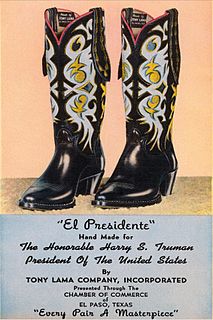 W
WA boot, plural boots, is a type of specific footwear. Most boots mainly cover the foot and the ankle, while some also cover some part of the lower calf. Some boots extend up the leg, sometimes as far as the knee or even the hip. Most boots have a heel that is clearly distinguishable from the rest of the sole, even if the two are made of one piece. Traditionally made of leather or rubber, modern boots are made from a variety of materials. Boots are worn both for their functionality – protecting the foot and leg from water, extreme cold, mud or hazards or providing additional ankle support for strenuous activities with added traction requirements, or may have hobnails on their undersides to protect against wear and to get better grip; and for reasons of style and fashion.
 W
WA. M. Kroop and Sons, Inc. is a riding boot store and manufacturer located in Laurel, Maryland. The business opened in 1925 and has crafted boots for many notable jockeys including George Woolf of Seabiscuit fame.
 W
WAllens Boots is a retail store in Austin, Texas, that specializes in western wear. The store offers items such as cowboy boots, hats, jeans, and shirts. Allens Boots opened its doors in 1977; the big, red boot above the entrance has since made the store easy to spot among the many other boutiques and shops along South Congress Avenue.
 W
WAn Australian work boot is a style of work shoe, typically constructed with a leather upper bound together with elastic sides and pull tabs on the front and back of the boot. The shoe lacks a tongue, and laces, and often contains a steel toe cap for occupational health and safety reasons. When the shoe contains a steel cap they are often known as "safety boots" or "steel toe boots". The boots generally lack an inner lining. The sole is generally polyurethane and the leather uppers are treated to be resistant to hot water, fats and mild alkaline and acid solutions.
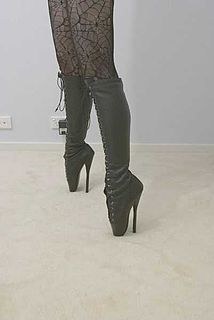 W
WThe ballet boot is a contemporary style of fetish footwear that merges the look of the pointe shoe with a high heel. The idea is to restrict the wearer's feet almost en pointe, like those of a ballerina, with the aid of long, slender heels. When upright, the feet are held nearly vertical by the shoe, thus putting nearly all of the body's weight on the tips of the toes. However, a properly tight fit will hold the shoe to the wearer's instep and heel, thereby reducing the weight on the wearer's toes.
 W
WBean Boots are a type of water-resistant "duck boots" manufactured by L.L.Bean. They are constructed from a rubber sole and a leather upper. The boots were created in 1911 and were an instant success. The boots became an item of clothing connected to elite prep schools. In the 2010s, the boots experienced a resurgence in popularity leading to a shortage, as demand exceeded production capacity.
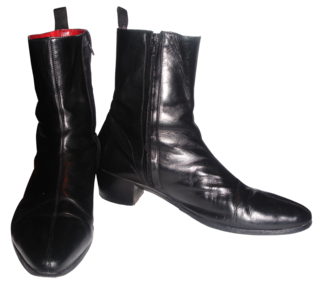 W
WA Beatle boot is a style of boot that has been worn since the 1960s—made popular by the English rock group the Beatles, for whom they were originally made. The boots are a variant of the Chelsea boot: they are tight-fitting, Cuban-heeled, ankle-high boots with a sharp pointed toe. The style can feature either elastic or zipped sides.
 W
WBoot fetishism is a sexual fetish focused on boots. Boots have become the object of sexual attraction amounting to fetishism for some people and they have become a standard accessory in BDSM scenes and a fashion accessory in music videos. Boots are seen as perhaps the most fetishistic of all footwear and boots may be the most popular fetish clothing attire.
 W
WA boot jack, sometimes known as a boot pull, is a small tool that aids in the removal of boots. It consists of a U-shaped mouth that grips the heel of the boot, and a flat area to which weight can be applied with the opposite foot. To operate it, the user places the heel of the boot in the mouth of the jack, stands on the back of the device with the other foot, and pulls his foot free of the front boot. The process is then repeated to remove the other boot.
 W
WCaulk boots or calk boots are a form of rugged footwear that are most often associated with the timber industry but could be, though rarely are, worn for hiking and in industries such as manufacturing and construction, owing to their safety features.
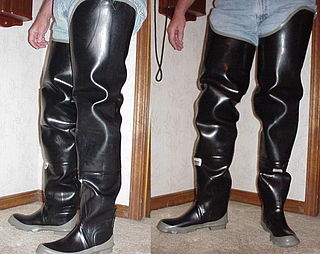 W
WChap boots are a form of footwear. They are tall boots which cover the whole leg up to the crotch, with a strap attached to the outer side. These straps consist of a loop of material through which a belt is threaded to hold the boots up. Thus the boots act similarly to a pair of chaps. Such boots are often seen as part of boot fetishism.
 W
WChelsea boots are close-fitting, ankle-high boots with an elastic side panel. They often have a loop or tab of fabric on the back of the boot, enabling the boot to be pulled on. The boot dates back to the Victorian era, when it was worn by both men and women.
 W
WChippewa Boots, originally known as Chippewa Shoe Manufacturing Company, is a manufacturer of footwear, principally men's work and recreational boots. It also manufactures a limited line of heavy and casual shoes, and some women's footwear. It was founded in Chippewa Falls, Wisconsin, in 1901. In 1984 it was acquired by Justin Brands, which was in turn acquired by Berkshire Hathaway in August 2000. Other companies under Justin Brands include Justin Boots, Justin Original Workboots, Nocona Boots, and Tony Lama Boots.
 W
WChukka boots are ankle-high leather boots with suede or leather uppers, leather or rubber soles, and open lacing with two or three pairs of eyelets. The name chukka possibly comes from the game of polo, where a chukka is a period of play.
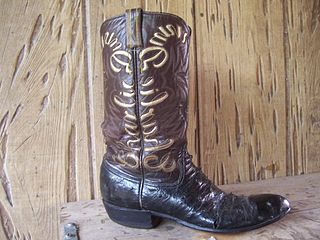 W
WCowboy boots refer to a specific style of riding boot, historically worn by cowboys. They have a high heel that is traditionally made of stacked leather, rounded to pointed toe, high shaft, and, traditionally, no lacing. Cowboy boots are normally made from cowhide leather, which may be decoratively hand tooled, but are also sometimes made from "exotic" skins like alligator, snake, ostrich, lizard, eel, elephant, stingray, elk, buffalo, and so on.
 W
WCharles Russell Dunn was an American bootmaker of handmade Western, or cowboy, boots for more than 80 years. Dubbed the "Michelangelo of cowboy boots," he first gained widespread notice in the wake of Jerry Jeff Walker's song "Charlie Dunn" (1972). By the time he retired in 1988 from Texas Traditions, his shop in Austin, he routinely charged up to $3,000 for a pair of boots, had a waiting list of hundreds of interested buyers willing to wait three years for delivery, and had made boots for a long list of celebrities, including Arnold Palmer, Mary Kay Place, Gene Autry, Slim Pickens, Don F Brooks, Harry Belafonte, Ernest Tubb, Peter Fonda, and Carole King.
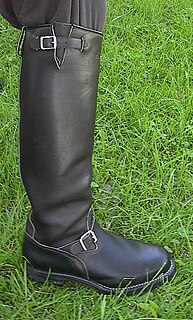 W
WEngineer boots, also known as engineer's boots or engineering boots, are an American type of traditional leather work-boots. Their lace-less, rugged construction made them popular among motorcycle riders. Originally developed in the 1930s for firemen working on steam locomotives, the boots gained substantial popularity in the post–World War II era during a growing motorcycling culture. They became popular symbols of teenage rebellion in the 1950s and a common component of greaser wear. They were later adopted by skinheads and punks in the 1970s. By the 2010s, engineer boots were being popularly worn for fashion purposes, especially by non-traditional customers such as women, young urban professionals, and hipsters.
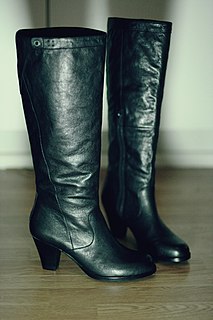 W
WA fashion boot is a boot worn for reasons of style or fashion. The term is usually applied to women's boots. Fashion boots come in a wide variety of styles, from ankle to thigh-length, and are used for casual, formal, and business attire. Although boots were a popular style of women's footwear in the Nineteenth Century, they were not recognized as a high fashion item until the 1960s. They became widely popular in the 1970s and have remained a staple of women's winter wardrobes since then.
 W
WGo-go boots are a low-heeled style of women's fashion boot first introduced in the mid-1960s. The original go-go boots, as defined by André Courrèges in 1964, were white, low-heeled, and mid-calf in height, a specific style which is sometimes called the Courrèges boot. Since then, the term go-go boot has come to include the knee-high, square-toed boots with block heels that were very popular in the 1960s and 1970s; as well as a number of variations including kitten heeled versions and colours other than white.
 W
WThe Golden Gumboot is a competition between the Far North Queensland towns of Tully, Innisfail, and Babinda in Australia for the wettest town of Australia. These towns are located in the Wet Tropics and on land that was previously covered by rainforest. These areas experience some of the highest levels of rainfall in Australia through monsoonal rain and cyclones. The winner for the competition was awarded a rubber boot.
 W
WThe Hessian is a style of light boot that became popular from the beginning of the 19th century.
 W
WHiking (walking) boots are footwear specifically designed for protecting the feet and ankles during outdoor walking activities such as hiking. They are one of the most important items of hiking gear, since their quality and durability can determine a hiker's ability to walk long distances without injury. Hiking boots are constructed to provide comfort for walking considerable distance over rough terrain. Boots that protect the hiker's feet and heel are recommended. Hiking boots give ankle support and are fairly stiff. A less popular alternative is to use light trainers with thin soles. Footwear should be neither too loose nor too tight, to help prevent blisters and sore feet. Hiking socks that wick sweat from the feet, provide warmth, and cushion the feet are recommended and a thin, inner sock may also help. Most hiking boots are also designed for other outdoor activities such as backpacking, climbing, mountaineering, and hunting.
 W
WHip boots, or hip waders as they are sometimes called, are a type of tall boot initially designed to be worn by river fishermen. Hip boots are typically made out of rubber, they may also be made out of PVC, nylon and/or polyester. Other materials, such as wool, cotton and foam, are used to add warmth and comfort. The boots completely cover the legs, up to the tops of the thighs or all the way up to the waist. Hip boots are designed to protect the wearer from water, and allow wading out into deeper waters. They also help to keep the feet and legs warm. Hip boots are also worn by many ecologists, environmental scientists, and aquatic biologists who do tests in swamps or lakes to determine the quality of water.
 W
WHunter Boot Ltd. is a rubber Wellington boot and footwear brand. Originally established as North British Rubber Company in 1856, the company is headquartered in Edinburgh. Scotland. It also has offices in London, New York and Düsseldorf. Besides rubber boots, it sells other products such as bags, socks, and other accessories. It previously made tyres, conveyor belts, combs, golf balls, hot water bottles and rubber flooring. Hunter holds several Royal Warrants by Appointment as suppliers of waterproof footwear.
 W
WHwa are a type of traditional Korean boot, which, along with yi (이), is a subdivision of Korean shoes. The yi refers to all kind of shoes that do not go up to ankle. Hwa are usually made of leather, and artisans who make the shoes are called hwajang (화장). It was originally worn by northern kingdoms of Korea. The horse-riding cultures of the North appear to have typically worn leather boots (hwa), while the farmers of the South wore shoes of leather or straw (hye). Different types of boots were worn by military and civil officials.
 W
WJika-tabi (地下足袋) are a style of traditional Japanese footwear invented in the early 20th century. Similar to tabi socks in both appearance and construction, jika tabi have a divided toe; though they can be worn with traditional thonged footwear such as geta and zōri, jika tabi are mostly designed and made to be worn alone as outdoor footwear, resembling boots that reach roughly to the mid-calf. Jika tabi are also known as "tabi boots".
 W
WThe Jodhpur boot is an ankle boot or Chelsea boot designed as a riding boot with a rounded toe and a low heel. They originally fastened with a strap and buckle, but today the term also includes designs with straps that do not wrap entirely around the ankle and the elastic-sided design without a strap also known as Chelsea boots. A closely related riding boot design is called a paddock boot, particularly if modified to have a lace-up front. It is named after Jodhpur, the second-largest city in the Indian state of Rajasthan.
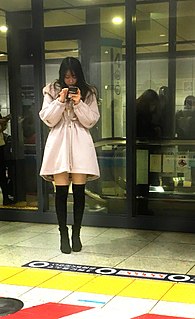 W
WKnee-high boots are boots that rise to the knee, or slightly thereunder or over. They are generally tighter around the leg shaft and ankle than at the top. Originally made of leather, versions made of a synthetic rubber, they are used by fishermen, dairy workers, stable hands, duck hunters, clammers, etc. to protect the feet from water, mud, manure, etc. and to provide traction on slippery surfaces. Most slip on, but there are varieties with buckles and those that lace up.
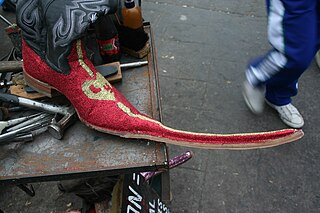 W
WMexican pointy boots or Trival boots are a style of pointed fashion boots made with elongated toes that were a popular footwear for men in parts of Mexico. The boots were commonly worn in an ironic and comedic way by males involved in the Trival music subculture.
 W
WMoon Boot is a snow boot brand first created as après-ski wear in the early 1970s by manufacturer Tecnica Group of Giavera del Montello in Italy. They became a popular fad in the years following the Apollo 11 moon landing, and resurfaced as a retrofuturistic fashion trend in the early 2000s. They received additional exposure through the nerdy protagonist of the 2004 film Napoleon Dynamite. Starting in 2011 they have been produced in Ukraine, at the rate of some 700,000 per year.
 W
WMukluks or kamik are a soft boot, traditionally made of reindeer (caribou) skin or sealskin, and worn by Arctic aboriginal people, including the Inuit, Iñupiat, and Yupik.
 W
WOver-the-knee boots, OTK boots, are long boots that fully or partly cover the knee. Originally created as a man's riding boot in the 15th century, in the latter part of the 20th century, the style was redefined as a fashion boot for women. Over-the-knee boots are also used as a work boot in circumstances requiring additional protection for the legs.
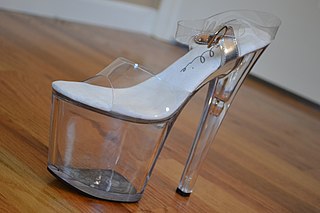 W
WPlatform shoes are shoes, boots, or sandals with an obvious thick sole, usually in the range of 3–10 cm (1–4 in). Platform shoes may also be high heels, in which case the heel is raised significantly higher than the ball of the foot. Extreme heights, of both the sole and heel, can be found in fetish footwear such as ballet boots, where the sole may be up to 20 cm (8 in) high and the heels up to 40 cm (16 in) or more. The sole of a platform shoe can have a continuous uniform thickness, have a wedge, a separate block or a stiletto heel. Raising the ankle increases the risk of a sprained ankle.
 W
WA riding boot is a boot made to be used for horse riding. The classic boot comes high enough up the leg to prevent the leathers of the saddle from pinching the leg of the rider, has a sturdy toe to protect the rider's foot when on the ground and has a distinct heel to prevent the foot from sliding through the stirrup. The sole is smooth or lightly textured to avoid being caught on the tread of the stirrup in the event of a fall.
 W
WA rigger boot is a particular type of pull-on safety boot in the United Kingdom. The name "rigger" comes from the fact that they were standard issue for workers on the offshore oil rigs in the North Sea, but are nowadays worn by most types of manual worker as a general purpose workboot.
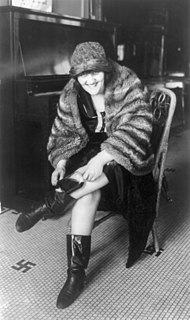 W
WRussian boot is the name applied to a style of calf- or knee-length fashion boot for women that was popular in the early part of the 20th century. Russian boots fell out of favor in the 1930s, but were the inspiration for the high-leg fashion boots that returned to popularity in the 1950s and 60s. Today the term Russian boot is sometimes applied to the style of low heeled boots worn by some folk dancers.
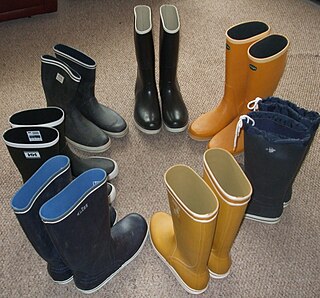 W
WSeaboots, also known as sailing boots, are a type of waterproof boot designed for use on deck on board boats and ships in bad weather, to keep the legs dry, and to avoid slipping on the wet rolling deck. The most common fabrics are Gore-Tex and leather.
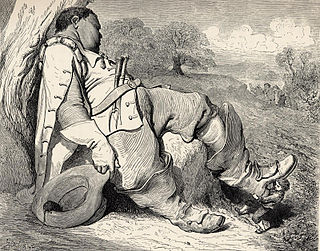 W
WSeven-league boots are an element in European folklore. The boot allows the person wearing them to take strides of seven leagues per step, resulting in great speed. The boots are often presented by a magical character to the protagonist to aid in the completion of a significant task.
 W
WSheepskin boots are boots made from sheepskin. The wool on sheepskin has good insulating properties and so such boots are commonly worn when it is cold.
 W
WA snow boot is a type of boot, generally waterproof, or water-resistant. The boot, in almost all cases, has a high side, keeping snow from entering the boot, and a rubber sole, to keep water out. Snowboots are used in wet, slushy, muddy, and, snowy situations.
 W
WSolovair is a brand of British-made boots and footwear, produced by NPS Shoes Ltd., which was established in 1881. The NPS factory is based in Wollaston, Northamptonshire, an area known for its shoe industry. NPS shoes are known for their Goodyear welt technology and use it in all their shoe production. This particular technique is needed to fix the Solovair sole onto "Soft Sole Suspension" boots and shoes. Shoe manufacturer R. Griggs Group Ltd. had the patent to produce Dr. Martens boots but not the technology. So in 1960 Griggs and NPS collaborated to create a boot using a Solovair sole and a Griggs upper, and the result was the now iconic Dr. Martens boot. The first pair left the NPS factory in 1960. NPS Shoes continued to make footwear under licence until the mid 1990s called 'Dr Martens made by Solovair'. They trademarked the name Solovair in 1995 and now make their own air-cushioned boot using the same lasts and leather cutters and machines used to create the first original Dr. Martens suspension soles in the UK.
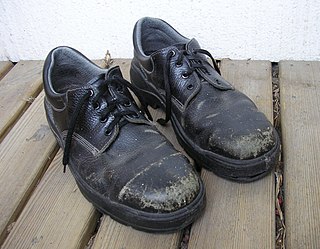 W
WA steel-toe boot is a durable boot or shoe that has a protective reinforcement in the toe which protects the foot from falling objects or compression.
 W
WThigh-high boots, known also as thigh-length boots or simply thigh boots, are boots that extend above the knees to at least mid-thigh. Other terms for this footwear include over-the-knee boots and, especially when cuffed, pirate boots. Lengths vary from reaching just over the knee to reaching almost to the crotch.
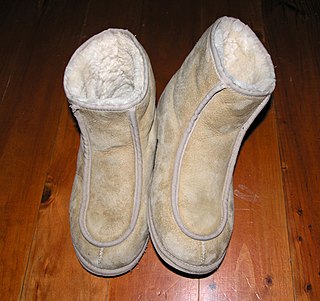 W
WUgg boots are a unisex style of sheepskin boot originating in Australia. The boots are typically made of twin-faced sheepskin with fleece on the inside, a tanned outer surface and a synthetic sole. The term "ugg boots" originated in Australia, initially for utilitarian footwear worn for warmth, and which were often worn by surfers during the 1960s. In the 1970s, the boots were introduced to the surf culture of the United Kingdom and the United States. Sheepskin boots became a fashion trend in the U.S. in the late 1990s and as a worldwide trend in the mid-2000s. In Australia, they are worn predominantly as slippers and often associated with "daggy" fashion sense and "bogan" culture.
 W
WUggs-N-Rugs is a small business in Perth, Western Australia, manufacturing and retailing ugg boots. In 2006 Uggs-N-Rugs successfully challenged the registration of ugg/ug/ugh as a trade mark in Australia and continues to challenge the trademark registration through the Australian Sheepskin Association.
 W
WValenki are traditional Russian winter footwear, essentially felt boots: the name valenok literally means "made by felting". Valenki are made of wool felt. They are not water-resistant, and are often worn with galoshes to keep water out and protect the soles from wear and tear. Valenki were once the footwear of choice for many Russians, but in the second half of the 20th century they lost most of their appeal in cities, due to their association with rustic dress.
 W
WWaders denotes a waterproof boot or overalls extending from the foot to the thigh, the chest or the neck. They are traditionally made from vulcanised rubber, but available in more modern PVC, neoprene and Gore-Tex variants. Waders are generally distinguished from counterpart waterproof boots by shaft height; the hip boot extending to the thigh and the Wellington boot to the knee. For the sake of emphasis, therefore, waders are sometimes defined by the extent of their coverage as thigh waders, chest waders or full-body waders. As a drysuit variant, full-body waders come with leaktight cuffs or gloves fitted to the sleeves and with a leaktight collar or hood fitted to the neck, enabling the wearer to remain dry when standing or walking in deeper water. Waders are available with boots attached or can have attached stocking feet, to wear inside boots, or inside swimfins in the case of float tube fishing.
 W
WWedge boots, wedgies, or lifties are shoes and boots with a sole in the form of a wedge, such that one piece of material, normally rubber, serves as both the sole and the heel.
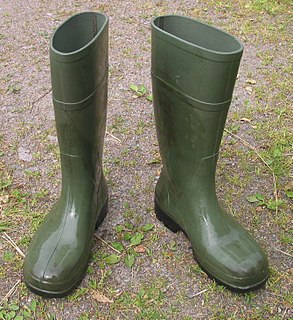 W
WThe Wellington boot was originally a type of leather boot adapted from Hessian boots. They were worn and popularised by Arthur Wellesley, 1st Duke of Wellington. The "Wellington" boot became a staple of practical foot wear for the British aristocracy and middle class in the early 19th century. The name was subsequently given to waterproof boots made of rubber and they are no longer associated with a particular class. They are now commonly used for a range of agricultural and outdoors pursuits.
 W
WWinklepickers, or winkle pickers, are a style of shoe or boot worn from the 1950s onward by British rock and roll fans. The feature that gives both the boot and shoe their name is the very sharp and long pointed toe, reminiscent of medieval footwear and approximately the same as the long pointed toes on some women's high-fashion shoes and boots in the 2000s.